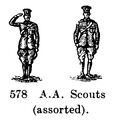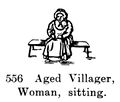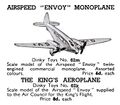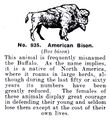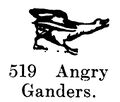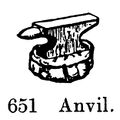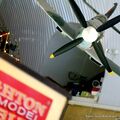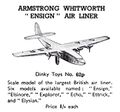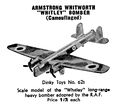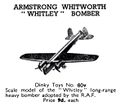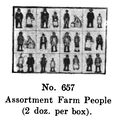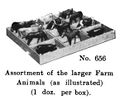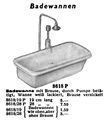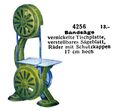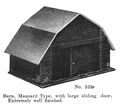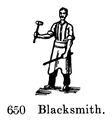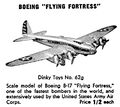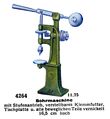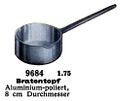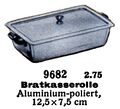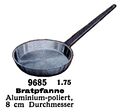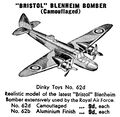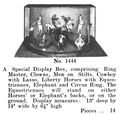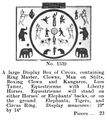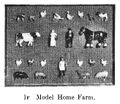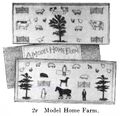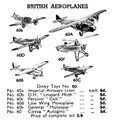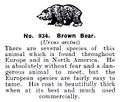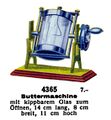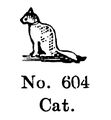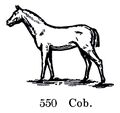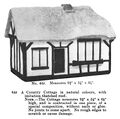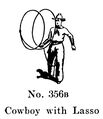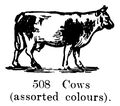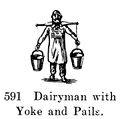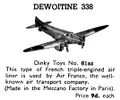Category:World War Two
November 1939: Dinky Toys "Mechanised Units" advert [image info]
November 1939: Dinky Toys, outbreak of war [image info]
December 1939: Lott's "Christmas Parade" advert [image info]
The Second World War arguably marked the end of a Golden Age of distinctly British toymaking, which had flourished though the 1920s and 1930s. WW1 had broken the previous German dominance of metal toy manufacturing and encouraged British manufacturers (and prospective manufacturers) to move from wood to metal as a material, which created greater opportunities for finishes, mechanisms and mass production, and the industry showed practically year-on-year innovation between the wars. This was cruelly cut short in 1939 with the outbreak of World War Two, resulting in the slowdown and then cessation of all toy production as manufacturing industry was switched to war work.
Toymakers in World War Two
Some idea of the situation faced by toymakers can be gleaned form the evolution fo toy advertising during the period.
With the War looming, the second half of 1939 saw a sudden and notable increase in the number of military toys and models, including tanks, armoured vehicles and fighter planes, but also general-purpose military vehicles that people would have started seeing on the roads.
Advertising in 39-40 began to emphasise the usefulness of toys and construction kits as a "blackout hobby" to keep children occupied during the long blackout nights, and Micromodels also advertised their card models as being ideal things to work on when stuck in a bombshelter, as a Micromodels kit and part-built model, and all necessary tools, could all be comfortably fitted into a cigarbox. .
In 1940-41, as it became clear that metal toy toy manufacturing in particular was eventually going to have to be shut down, some of the larger manufacturers' advertising became more generic. Lines Brothers main adverts simply listed the company's main brand logos and brandnames in an attempt to keep them fresh in tpotetial buyers'minds until after normality was resumed. Juneero took out full-page adverts, promoting their products not just as construction toys but as useful tools for fixing up damaged household goods. Some manufacturers seemed to have gone through their warehouses and rediscovered old unsold stock – Meccano Ltd suddenly readvertised the Dolly Varden dollhouse that had been launched back in 1933 and had disappeared without trace almost immediately afterwards, and Bassett-Lowke similarly put out a "stock clearance" ad for the leftovers of their Nuways dollhouse furniture range, which had also not obviously been promoted or advertised since about ~1934.
As the War progressed, not only was metal toy production banned, but also the sale of metal toys, presumably to stop toymakers from sneakily continuing production and selling the results as pre-war stock. Wilson Lorries kits seemed to stay in production, presumably because the amount of metal was minimal, and the company would have been able to claim that ther other materials were essentially "off-cuts" left over form other manufacturing, that were worthless for almost anything else. Toy manufacturers kept advertising, even if they currently had nothing to sell, and in 1945 these adverts started to be more optimistic, promising that production would start really soon.
Post-war
In the event, WW2 was followed by the Korean War. Korea had been liberated from the Japanese, and (like Germany) partitioned, with Russia taking nominal control over the North, and the allies controlling the South. The American determination that Korea wouldn't "go communist" led to a brutal suppression of suppression of groups with communist sympathies, including many of the anti-Japanese freedom fighters, who fled to the North. This created a highly polarised region that is still conflict-ridden today. Britain still had National Service and metal shortages after WW2, and the company's wrecked economy meant that a big chunk of dmenstc toy production was earmarked as "export-only", in an attempt to try to earn foreign currency and reduce the country's debts. Pelham Puppets was founded by a demobilised Bob Pelham to provide work for himself and for other ex-service-people, and initially got by using war surplus materials and scrap and offcut material salvaged for skips. Once the company became successful, again a big chunk of production was earmarked as "export only".
The toy industry didn't get back onto its feet until the 1950s, after which technology had moved on, plastics were becoming dominant, and many existing toymakers found themselves with out-of-date skills, trying to compete with cheap internationally-manufactured plastic, and a new business environment where toy companies were being bought up not just by their national competitors, but by international corporations, some of whom were not even toy manufacturers, but were looking to diversify form other markets (such as breakfast cereals).
External links
- Battle of Britain: Model Squadron (channel4.com) – recreation of episodes from the Battle of Britain using models
Subcategories
This category has the following 27 subcategories, out of 27 total.
A
- Aeroplane Set (Dinky Toys 64) (empty)
- Aeroplane Set (Dinky Toys 65) (1 P, 1 F)
B
- Barton dollhouse furniture (1 P, 6 F)
- British Aeroplanes (Dinky Toys 60) (6 P, 8 F)
C
D
- Dol-Toi (2 P, 8 F)
E
- Ertl (2 P, 4 F)
H
- Hugar Railways (2 P)
I
- Interlocking Building Cubes (Kiddicraft) (1 P, 5 F)
J
M
- Meccano Mechanised Army (1 P, 6 F)
- Minex construction sets (13 F)
- Multi-Builder (1 P, 33 F)
N
R
S
- Spitfire (3 P, 18 F)
T
- TTR Presentation Sets (3 P, 3 F)
V
W
- Wilson Lorry scale model kits (1 P, 13 F)
Pages in category ‘World War Two’
The following 53 pages are in this category, out of 53 total.
B
D
F
H
M
R
S
- Savoia-Marchetti SM81 Pipistrello radio-controlled trimotor model airplane (Denis Hefford)
- Short-Mayo Composite Aircraft, Victory jigsaw puzzle MA2 (Victory 1930s)
- Snow White and the Seven Dwarfs, Disney lead figures (Britains 1654)
- Spitfire Mk 1a fighter plane, six-foot radio-controlled model (Robert Brown)
- Spitfire Mk II (Dinky Toys 719)
- Spitfire MK Vb fighter plane, radio-controlled, quarter-scale (Ken Manley)
- Spotting Chair and Observer (Britains 1731)
T
- Take Shelter
- Tank locomotive LNER 8307 (Leeds)
- The Hugar Train (Hugar)
- The Southern Railway and the influence of the Second World War on railway nationalisation, by James Allen
- Torpedo Dive Bomber, camouflaged (Dinky Toys 66d)
- Trix Twin trains, circa 1939
- Twin-Barrel Pom Pom Gun, 20mm Oerlikon anti-aircraft gun (Astra Pharos 25)
- Two-Pounder Anti-Aircraft Gun on Mobile Chassis (Britains 1717)
- Two-Seater Fighter (Dinky Toys 66c)
Media in category ‘World War Two’
The following 200 files are in this category, out of 893 total.
(previous page) (next page)- 00-gauge layout, night, Märklin, Leipziger Messe 1939 (MarklinCat 1939).jpg 3,200 × 2,176; 5.72 MB
- 18-Pounder Quick-Firing Field Gun Unit, Dinky Toys 162 (HamleyCat 1939).jpg 2,181 × 761; 603 KB
- 3-7 Anti-Aircraft Gun, Astra Pharos model 18 (MM 1940-07).jpg 3,000 × 1,900; 523 KB
- A C Gilbert (GaT 1939-11).jpg 879 × 1,200; 136 KB
- A T and T Building, New York Worlds Fair (NYWF 1939).jpg 2,000 × 1,223; 658 KB
- AA Scouts (assorted), Britains Farm 578 (BritCat 1940).jpg 694 × 717; 83 KB
- AA Sign, Crawley, Britains Farm 579 (BritCat 1940).jpg 662 × 1,159; 64 KB
- AA Sign, School, Britains Farm 579 (BritCat 1940).jpg 618 × 1,098; 59 KB
- Abbatt Toys (GaT 1939-11).jpg 1,200 × 800; 136 KB
- Abbatt Toys, logo (1939).jpg 654 × 644; 45 KB
- AC Gilbert American Flyer (GaT 1939).jpg 1,137 × 1,507; 199 KB
- Ad Bassett-Lowke MM Aug1939.jpg 581 × 762; 116 KB
- Administration Building, view 1 (NYWFStamp 1939).jpg 2,360 × 1,520; 672 KB
- Administration Building, view 2 (NYWFStamp 1939).jpg 2,360 × 1,520; 810 KB
- Admiral Byrds Penguin Island (NYWFStamp 1939).jpg 2,360 × 1,520; 691 KB
- Aged Villager, Man, sitting, Britains Farm 555 (BritCat 1940).jpg 716 × 588; 50 KB
- Aged Villager, Woman, sitting, Britains Farm 556 (BritCat 1940).jpg 725 × 619; 62 KB
- Airfix Construction Kits (Hobbies 1961).jpg 1,223 × 1,600; 755 KB
- Airspeed Envoy Monoplane, Dinky Toys 62m (MM 1940-07).jpg 2,312 × 1,794; 284 KB
- Airspeed Envoy Monoplane, Dinky Toys 62m 62k (MeccanoCat 1939-40).jpg 1,324 × 1,154; 197 KB
- Alfa-Romeo-Rennwagen - Racing Car, Märklin 5521-14 (MarklinCat 1939).jpg 948 × 604; 222 KB
- All Gas - Good Housekeeping Home (NYWFStamp 1939).jpg 2,360 × 1,520; 648 KB
- American Bison, Britains Zoo No935 (BritCat 1940).jpg 1,309 × 1,433; 301 KB
- Amiot 370 monoplane, Dinky Toys 64az (MCat 1939).jpg 1,453 × 1,021; 131 KB
- Angry Ganders, Britains Farm 519 (BritCat 1940).jpg 451 × 385; 37 KB
- Anvil, Britains Farm 651 (BritCat 1940).jpg 414 × 413; 41 KB
- Area 71.jpg 800 × 799; 403 KB
- Armstrong Whitworth Ensign Air Liner, Dinky Toys 62p (MeccanoCat 1939-40).jpg 1,242 × 1,159; 163 KB
- Armstrong Whitworth Whitley Bomber, camouflaged, Dinky Toys 62t (MM 1940-07).jpg 2,421 × 2,130; 394 KB
- Armstrong Whitworth Whitley Bomber, Dinky Toys 60v (MeccanoCat 1939-40).jpg 1,175 × 1,040; 129 KB
- Army Co-operation Autogiro, Dinky Toys 66f (MM 1940-07).jpg 1,436 × 885; 102 KB
- Army Set models, Meccano (MBoM4 1978).jpg 1,200 × 834; 882 KB
- Assortment of Farm Animals, Britains Farm 655 (BritCat 1940).jpg 1,305 × 906; 162 KB
- Assortment of Farm Animals, Britains Farm 664 (BritCat 1940).jpg 1,192 × 973; 129 KB
- Assortment of Farm People, Britains Farm 657 (BritCat 1940).jpg 921 × 939; 129 KB
- Assortment of larger Farm Animals, Britains Farm 656 (BritCat 1940).jpg 1,157 × 966; 138 KB
- Assortment of smaller Farm Animals, Britains Farm 658 (BritCat 1940).jpg 1,300 × 1,024; 155 KB
- Astra anti-aircraft station ad (1939-08).jpg 746 × 973; 193 KB
- Astra Pharos quarter-mile beam searchlight ad 1939.jpg 558 × 738; 160 KB
- Astra Pom-Pom Gun, box lid.jpg 2,400 × 1,037; 642 KB
- ATT Building (NYWFStamp 1939).jpg 2,360 × 1,520; 823 KB
- Auto-Union-Rennwagen - Racing Car, Märklin 5521-12 (MarklinCat 1939).jpg 909 × 622; 213 KB
- Auto-Union-Rennwagen - Racing Car, Märklin 5521-16 (MarklinCat 1939).jpg 1,160 × 844; 359 KB
- Auto-Union-Rennwagen - Racing Car, Märklin 5521-2 (MarklinCat 1939).jpg 982 × 691; 233 KB
- Auto-Union-Rennwagen - Racing Car, Märklin 5521-62 (MarklinCat 1939).jpg 1,064 × 687; 281 KB
- Aviation (NYWFStamp 1939).jpg 2,360 × 1,520; 795 KB
- Aviation Building (NYWFStamp 1939).jpg 2,360 × 1,520; 705 KB
- Baby Camel, Britains Zoo No943 (BritCat 1940).jpg 857 × 605; 60 KB
- Baby Elephant, Britains Zoo No944 (BritCat 1940).jpg 945 × 521; 57 KB
- Baby Hippopotamus, Britains Zoo No940 (BritCat 1940).jpg 1,316 × 985; 185 KB
- Baby Kangaroo or Wallaby, Britains Zoo No950 (BritCat 1940).jpg 1,310 × 841; 115 KB
- Baby Pandas, Britains Zoo No970 (BritCat 1940).jpg 1,085 × 821; 91 KB
- Baby Rhinoceros, Britains Zoo No951 (BritCat 1940).jpg 1,278 × 708; 111 KB
- Bactrian Camel with Boy Rider, Britains Zoo No953 (BritCat 1940).jpg 1,283 × 1,327; 194 KB
- Bactrian Camel, Britains Zoo No918 (BritCat 1940).jpg 1,297 × 1,349; 255 KB
- Badewannen - Bath, Märklin 8618 (MarklinCat 1939).jpg 1,478 × 1,642; 470 KB
- Baggage Car - Gepackwägen, DR, Märklin 354 354B 354J 354JB (MarklinCat 1939).jpg 2,129 × 1,249; 874 KB
- Baggerwerke - Excavator, Märklin 4316 (MarklinCat 1939).jpg 1,136 × 1,435; 468 KB
- Bailey Bridge model, 1-6-scale (Bassett-Lowke, WW2).jpg 1,200 × 1,011; 234 KB
- Balancier-Dampfmaschine, model, Märklin Minex (MarklinCat 1939).jpg 2,074 × 1,391; 977 KB
- Balsa Raft,WW2, LNER (ICNBR 1945).jpg 2,000 × 1,371; 587 KB
- Bananenwagen - Banana Wagon, Fyffes, Märklin 1682 (MarklinCat 1939).jpg 1,170 × 965; 633 KB
- Bananenwagen - Banana Wagon, Fyffes, Märklin 1792 (MarklinCat 1939).jpg 1,578 × 1,041; 707 KB
- Bandsäge - Band Saw, Märklin 4256 (MarklinCat 1939).jpg 1,341 × 1,243; 413 KB
- Barn, Mansard Type, Britains Farm 103F (BritCat 1940).jpg 1,600 × 1,408; 307 KB
- Barrage Balloon Section, box lid (Britains 1749).jpg 967 × 2,400; 550 KB
- Barrage Balloon Unit, Britains 1855 (BritCat 1940).jpg 2,220 × 1,585; 201 KB
- Bassett-Lowke stand, British Industries Fair 1939.jpg 993 × 1,200; 229 KB
- Bassett-Lowke WW2 advert (MRH12ed 1942).jpg 1,032 × 1,600; 333 KB
- Bathroom Furniture, Dinky Toys 104 (1939 catalogue).jpg 753 × 688; 91 KB
- Bayko trade advert (GaT 1939-05).jpg 3,000 × 2,003; 1.29 MB
- Bear Cubs, Britains Zoo No936 (BritCat 1940).jpg 1,287 × 817; 133 KB
- Bedeckter Güterwagen - Closed Goods Van, Märklin 1791 (MarklinCat 1939).jpg 1,562 × 1,021; 692 KB
- Bedeckter Güterwagen - Closed Goods Wagon, Märklin 1781 (MarklinCat 1939).jpg 1,418 × 1,069; 686 KB
- Bedeckter Güterwagen - Closed Goods Wagon, Märklin 1856 (MarklinCat 1939).jpg 1,857 × 1,074; 768 KB
- Bedroom Furniture, Dinky Toys 102 (1939 catalogue).jpg 775 × 750; 91 KB
- Bingoscope (GaT 1939-11).jpg 2,380 × 3,000; 1.32 MB
- Biplane, No0 Aeroplane Outfit (1939 catalogue).jpg 560 × 364; 30 KB
- Black Rock Pool (BrightonHbk 1939).jpg 1,200 × 821; 890 KB
- Black Rock Pool, diving board (BrightonHbk 1939).jpg 1,200 × 809; 877 KB
- Blacksmith with Anvil, Britains Farm 589 (BritCat 1940).jpg 593 × 735; 69 KB
- Blacksmith, Britains Farm 650 (BritCat 1940).jpg 637 × 680; 51 KB
- Blauer Vogel - Bluebird Speed Record Car, Märklin 5521-18 (MarklinCat 1939).jpg 1,174 × 667; 319 KB
- Bloch 220 airliner, Dinky Toys 64bz (MCat 1939).jpg 1,481 × 801; 105 KB
- Boeing Flying Fortress Monoplane, DInky Toys 62g (MeccanoCat 1939-40).jpg 1,278 × 759; 133 KB
- Boeing Flying Fortress, Dinky Toys 62g (MM 1940-07).jpg 2,199 × 1,963; 349 KB
- Bohrmaschine - Drill Station, Märklin 4264 (MarklinCat 1939).jpg 1,393 × 1,513; 423 KB
- Boy on Shetland Pony, Britains Farm 600 (BritCat 1940).jpg 549 × 665; 69 KB
- Boy or Girl for Howdah, Britains Zoo No939 (BritCat 1940).jpg 1,313 × 837; 134 KB
- Braunkohlenstaubwagen - Brown Coal Dust Wagon, Märklin 1775 (MarklinCat 1939).jpg 1,538 × 1,092; 737 KB
- Breakdown Car, Dinky Toys 30e (MCat 1939).jpg 451 × 345; 24 KB
- Breakdown Lorry, Minic (MM 1940-07).jpg 1,168 × 861; 117 KB
- Bretterwagen - Timber Wagon, Märklin 1966 (MarklinCat 1939).jpg 1,353 × 928; 590 KB
- Brickplayer (MM 1940-07).jpg 1,061 × 2,200; 557 KB
- Bridge of Tomorrow (NYWFStamp 1939).jpg 2,360 × 1,520; 802 KB
- Brighton Belle Pullman with George IV, cover art, Aubrey Hammond (BrightonHbk 1939).jpg 2,500 × 1,522; 2.41 MB
- Brighton Bus services (BrightonHbk 1939).jpg 2,319 × 3,000; 5.84 MB
- Brighton Tram services (BrightonHbk 1939).jpg 2,500 × 932; 1.8 MB
- Bristol Blenheim Bomber, camouflaged, Dinky Toys 62d (MM 1940-07).jpg 2,145 × 2,100; 408 KB
- Britain's Mechanised Army (MLtdCat 1939).jpg 1,200 × 791; 212 KB
- Britains Circus Set 1442 6pc (BritCat 1940).jpg 1,505 × 929; 146 KB
- Britains Circus Set 1443 10pc (BritCat 1940).jpg 1,533 × 1,200; 228 KB
- Britains Circus Set 1444 14pc (BritCat 1940).jpg 1,522 × 1,456; 231 KB
- Britains Circus Set 1539 23pc (BritCat 1940).jpg 1,509 × 1,689; 299 KB
- Britains Farm, Set 36F (BritCat 1940).jpg 1,897 × 682; 130 KB
- Britains Farm, Set 38F (BritCat 1940).jpg 1,867 × 983; 227 KB
- Britains Farm, Set 39F (BritCat 1940).jpg 1,869 × 1,154; 276 KB
- Britains Farm, Set 53F (BritCat 1940).jpg 1,587 × 666; 164 KB
- Britains Farm, Set 55F (BritCat 1940).jpg 1,845 × 993; 258 KB
- Britains Farm, Set 62F (BritCat 1940).jpg 1,889 × 1,305; 336 KB
- Britains logo (BritCat 1940).jpg 1,416 × 322; 75 KB
- Britains Mammoth Circus, retailers showcard No9 (Britains 1958-01).jpg 1,800 × 536; 248 KB
- Britains Mammoth Circus, showcard 10 (BritCat 1940).jpg 1,533 × 503; 141 KB
- Britains Model Home Farm, set 1F (BritCat 1940).jpg 1,308 × 1,132; 371 KB
- Britains Model Home Farm, set 2F (BritCat 1940).jpg 1,380 × 1,334; 422 KB
- Britains Model Home Farm, set 3F (BritCat 1940).jpg 2,205 × 1,237; 578 KB
- Britains Zoo, retailers showcard No2 (Britains 1958-01).jpg 1,206 × 699; 170 KB
- Britains Zoological Series heading (Britains 1940).jpg 800 × 451; 46 KB
- Britains Zoological Series, showcard 8 (BritCat 1940).jpg 949 × 641; 105 KB
- British Aeroplanes, Dinky Toys 60 (MeccanoCat 1939-40).jpg 1,342 × 1,423; 238 KB
- Brown Bear, Britains Zoo 934 (BritCat 1940).jpg 1,305 × 1,113; 212 KB
- Buick Viceroy Saloon, Dinky Toys 39d (MM 1940-07).jpg 1,660 × 960; 140 KB
- Bull, Britains Farm 573 (BritCat 1940).jpg 781 × 616; 92 KB
- Buttermaschine - Butter Churn, Märklin 4365 (MarklinCat 1939).jpg 1,053 × 1,143; 404 KB
- Cabriolet Car (Adler), Märklin 5521-51 (MarklinCat 1939).jpg 1,040 × 754; 351 KB
- Cabriolet Car (Horch), Märklin 5521-8-L (MarklinCat 1939).jpg 1,217 × 848; 437 KB
- Cabriolet Car, clockwork, Märklin 5522-4 (MarklinCat 1939).jpg 936 × 771; 266 KB
- Cabriolet Car, Märklin 5521-4 (MarklinCat 1939).jpg 974 × 705; 317 KB
- Calves (assorted colours), Britains Farm 509 (BritCat 1940).jpg 631 × 491; 42 KB
- Camouflaged Aircraft Set, label artwork (Dinky Toys Set No 68).jpg 3,000 × 1,843; 1.73 MB
- Canvas Tilt Lorry, Minic (MM 1940-07).jpg 1,327 × 931; 153 KB
- Caravan Trailer, Dinky Toys 30g (MCat 1939).jpg 499 × 347; 24 KB
- Carters with Whip, Britains Farm 505 (BritCat 1940).jpg 473 × 609; 49 KB
- Cat, Britains Farm 604 (BritCat 1940).jpg 410 × 444; 30 KB
- Cedar Trees, Britains Farm 522 (BritCat 1940).jpg 1,104 × 1,267; 203 KB
- Chad Valley Co Ltd, roulettes (GaT 1939).jpg 1,130 × 1,477; 168 KB
- Chicken House and Run, Britains Farm 102F (BritCat 1940).jpg 1,200 × 674; 117 KB
- Chicks (assorted positions), Britains Farm 550 (BritCat 1940).jpg 716 × 523; 41 KB
- Chiltern Teddybears, Hugmee Bear (GaT 1939-04).jpg 1,219 × 1,600; 334 KB
- Chimpanzee, Britains Zoo No915 (BritCat 1940).jpg 1,305 × 957; 182 KB
- Choralkreisel - Humming Top, Märklin 8996-12 (MarklinCat 1939).jpg 1,460 × 754; 515 KB
- Chrysler Motors Building (NYWFStamp 1939).jpg 2,360 × 1,520; 786 KB
- Chrysler Royal Sedan, Dinky Toys 39e (MM 1940-07).jpg 1,538 × 858; 140 KB
- Churchill Square area before redevelopment, 1939 map (BrightonHbk 1939).jpg 1,199 × 1,200; 770 KB
- CIWL Dining Car - Speisewagen, Marklin 352J (MärklinCat 1939).jpg 2,033 × 670; 690 KB
- CIWL Schlafwagen - Sleeping Car, Märklin 1757 (MarklinCat 1939).jpg 1,630 × 990; 622 KB
- CIWL Speisewagen - Dining Car, Märklin 1756 (MarklinCat 1939).jpg 1,616 × 960; 601 KB
- Clown (Boxing), Britains Circus 447 (BritCat 1940).jpg 560 × 784; 37 KB
- Clown with Hoop, Britains Circus 354 (BritCat 1940).jpg 645 × 997; 64 KB
- Clown, Standing, Britains Circus 358 (BritCat 1940).jpg 628 × 809; 51 KB
- Club Saloon Brake Compartment, Coronation Scot US tour (MRN 1939-03).jpg 836 × 1,200; 173 KB
- Club Saloon, Coronation Scot US tour (MRN 1939-03).jpg 1,200 × 944; 312 KB
- Cob, Britains Farm 550 (BritCat 1940).jpg 716 × 673; 62 KB
- Coconut Palm Tree, Britains Zoo No919 (BritCat 1940).jpg 1,306 × 2,016; 310 KB
- CODEG (GaT 1939-11).jpg 878 × 1,200; 174 KB
- Cold Frame, Britains Farm 675 (BritCat 1940).jpg 1,053 × 766; 150 KB
- Colts (Shire), Britains Farm 507 (BritCat 1940).jpg 491 × 617; 47 KB
- Combat Set models, Meccano (MBoM4 1978).jpg 1,200 × 844; 888 KB
- Commando Battle Waggon, Wilsons Lorries (MM 1943-12).jpg 1,450 × 2,156; 2.35 MB
- Consumers Building (NYWFStamp 1939).jpg 2,360 × 1,520; 832 KB
- Contemporary Arts Building (NYWFStamp 1939).jpg 2,360 × 1,520; 854 KB
- Coronation loco 6220, US tour, profile (MRN 1939-03).jpg 2,400 × 711; 324 KB
- Coronation Scot US (MRN 1939-03).jpg 2,400 × 2,339; 729 KB
- Coronation Scot US, special coaches (MRN 1939-03).jpg 2,400 × 834; 355 KB
- Corridor First Lounge Coronation Scot US (MRN 1939-03).jpg 1,200 × 960; 310 KB
- Cosmetics Building (NYWFStamp 1939).jpg 2,360 × 1,520; 741 KB
- Country Clergyman, Britains Farm 593 (BritCat 1940).jpg 517 × 675; 56 KB
- Country Cottage, Britains Farm 44F (BritCat 1940).jpg 2,236 × 2,209; 762 KB
- Court of States, view 1 (NYWFStamp 1939).jpg 2,360 × 1,520; 690 KB
- Court of States, view 2 (NYWFStamp 1939).jpg 2,360 × 1,520; 667 KB
- Court of States, view 3 (NYWFStamp 1939).jpg 2,360 × 1,520; 758 KB
- Covered Wagon - Planewagen, Märklin 363 (MarklinCat 1939).jpg 824 × 821; 318 KB
- Cowboy with Lasso, Britains Circus 356 (BritCat 1940).jpg 701 × 813; 47 KB
- Cows (assorted colours), Britains Farm 508 (BritCat 1940).jpg 707 × 627; 78 KB
- Cows, feeding, Britains Farm 539 (BritCat 1940).jpg 718 × 551; 69 KB
- Crane Wagon - Kranwagen, Märklin 366N (MarklinCat 1939).jpg 864 × 854; 219 KB
- Crazy Paving, Britains Farm 668 (BritCat 1940).jpg 613 × 747; 63 KB
- Crossley Lorry, 1-12-scale (Bassett-Lowke, WW2).jpg 1,200 × 920; 205 KB
- Cuban Village (NYWFStamp 1939).jpg 2,360 × 1,520; 882 KB
- Curate, Britains Farm 592 (BritCat 1940).jpg 462 × 592; 47 KB
- Daimler saloon, Minic 46M, 1939.jpg 531 × 395; 41 KB
- Dairyman with Yoke and Pails, Britains Farm 591 (BritCat 1940).jpg 719 × 713; 69 KB
- Dekupiersäge - Scroll Saw, Märklin 4271 (MarklinCat 1939).jpg 1,442 × 1,177; 468 KB
- Delivery Vans, Dinky Toys 28-280 (MCat 1939).jpg 1,597 × 2,741; 561 KB
- Deutsche Reichspost (DRP) Postwagen - Mail Van, Märklin 1726-PO (MarklinCat 1939).jpg 1,216 × 1,031; 561 KB
- Dewoitine 338, Dinky Toys 61az (MeccanoCat 1939-40).jpg 1,069 × 887; 120 KB
- DH Comet Aeroplane, Dinky Toys 60g (MeccanoCat 1939-40).jpg 1,081 × 536; 68 KB
- DH Flamingo Liner, Dinky Toys 62f (MeccanoCat 1939-40).jpg 1,051 × 866; 132 KB
- Diesel Rail Car, Dinky Toys 26z (MCat 1939).jpg 1,117 × 837; 93 KB
- Dining Room Furniture, Dinky Toys 101 (1939 catalogue).jpg 779 × 595; 73 KB








